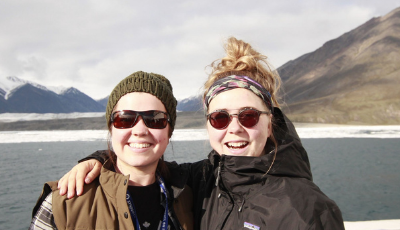

You live in a small town where the drinking water has become contaminated!
In your town, most homes and businesses have their own private wells. By performing lab tests on the groundwater, it is discovered that it is contaminated with a fuel that is stored by three companies. Each suspected company has an argument as to why they are not responsible for the contamination:
- The Oil Production Company is the prime suspect because they store fuel and supply it to the other suspected companies.
- The Oil Production Company has recently tested their storage tanks for leaks and knows they are safe. They think that the contamination is coming from the Trucking Company.
- The Trucking Company says there is no proof that they are responsible. They think the pollution is coming from the Gas Station or the Oil Production Company.
You are an expert in this field and the town wants you to find the contamination culprit!

HOW WOULD A LEAKING FUEL STORAGE TANK CONTAMINATE A WELL?
- Something causes damage to an underground storage tank such as corrosion.
- The damaged tank then begins to leak fuel.
- The fuel leaches through the soil and into the water table—contaminating the groundwater.
- Then the well pumps up the contaminated groundwater.
- Since groundwater is typically assumed to be a very safe source of water, it goes through very little treatment and testing. So, it is likely that the contamination will go undetected for a little while and the residents will drink polluted water.
WHAT SORT OF CONTAMINANTS ARE IN A FUEL SPILL?
- Fuel contains a bunch of different hydrocarbons including butane, pentane, isopentane, and BTEX (benzene, ethylbenzene, toluene, and xylene).
- The BTEX compounds are typically the biggest thing to worry about.
- Ingestion can lead to headaches, throat irritation, and breathing difficulties. Over a long period of time, exposure can even lead to memory loss and impaired muscle function.
- Luckily, this contamination event was caught early on and with your help it’ll be cleaned in no time!!
WHY DOES IT MATTER WHO CONTAMINATED THE GROUNDWATER?
- Ground water is EXPENSIVE to clean!!!!!
- That means a lot could be at stake for the company responsible so it is important to find the correct source of contamination.
Let’s get to it!!!
What you’ll need:
- Ruler, pencil, pen, eraser
- The activity sheet (available below to print!)
Objective: Create a topographical map to predict groundwater flow and identify the culprit of the contamination.
Procedure: The direction of groundwater flow can be used to determine the source of pollution. Since groundwater typically flows downhill—the suspected source that is furthest upstream is the source of contamination. You are given the elevations of seven wells to create a contour map with.
- The contours of the landscape can be estimated with the seven elevations. Assume there is a constant slope between the known points. For example, there are four equal slope increases of 10ft between a 10ft point and a 50ft point.
- Start by lightly drawing lines with a pencil between wells with at least 20 ft of elevation difference between them.
- Divide these lines into equal segments representing 10 ft elevation increases.
- Lightly draw smooth, curved lines connecting all of the wells and marks with the same elevations. These are the contour lines.
- With a pen, draw short arrows perpendicular from the contour lines. The arrows can be approx. ½ inches apart. These arrows represent the direction of groundwater flow so it’s important to be careful to make them as perpendicular as possible. Erase the contour lines and other penciled-in lines to give a better view of the flow direction. You can draw longer arrows now if that helps.
- Draw a loop around all of the contaminated wells. From the flow arrows you should be able to see what the source of contamination is.

Hannah Groenwegen
Hannah is from London, Ontario and is an Alum of the 2017 SOI Arctic Expedition. She is currently finishing her last semester of Civil Engineering at the University of British Columbia’s Okanagan Campus. At UBC she has been involved with Geering Up Engineering Outreach and Global Brigades. Her interests are in water quality and treatment, and she is hoping to pursue graduate studies in Environmental Engineering. In her free time, Hannah’s favourite things to do are drawing, hiking, seeing her friends, and cooking!
DISCOVER MORE
Climate Action Cohort Reflections
Focused on building climate leaders, the CAC brings together 10 Canadian youth alumni each year to bridge the gaps between policy decisions,...
How to meaningfully participate in conservation as a young person
Being a young person trying to break into the conservation world can be intimidating. While there are many opportunities out there, a lot of youth...
When Tiktok Leads to Food Donations
Kyra Flaherty, SOI Arctic 2016 Alum, and tourism development coordinator with the Nunavut government experienced a flash of internet fame when her...



